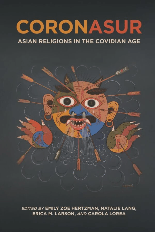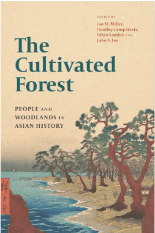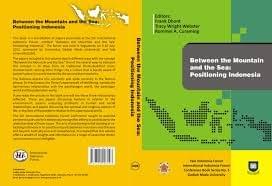
- …
- …
Research Publications
Books, Articles and Book Chapters
BOOK

The Camphor Tree and the Elephant: Religion and Ecological Change in Maritime Southeast Asia (Seattle: University of Washington Press, 2023)
What is the role of religion in shaping interactions and relations between the human and nonhuman in nature? Why are Muslim and Christian organizations generally not a potent force in Southeast Asian environmental movements? The Camphor Tree and the Elephant brings these questions into the history of ecological change in the region, centering the roles of religion and colonialism in shaping the Anthropocene—“the human epoch.” This book traces the conversion of the Batak people in upland Sumatra and the Malay Peninsula to Islam and Christianity during the long nineteenth century. It finds that the process helped shape social structures that voided the natural world of enchantment, ushered in a cash economy, and placed the power to remake local landscapes into the hands of a distant elite. Using a wide array of sources such as family histories, prayer manuscripts, and folktales in tandem with colonial and ethnographic archives, the book brings everyday religion and its far-flung implications into our understanding of the environmental history of the modern world.
Available for purchase on Amazon (paperback and Kindle), University of Washington Press, and major bookstores.
This book has been reviewed in Choice and Journal of Southeast Asian Studies. Consider reviewing the book at Reading Religion for a review copy.
Peer-Reviewed Journal Articles
"Charismatic Mega-Fauna in Southeast Asia," Oxford Research Encyclopedia of Asian History (online), Mar 2023.
Non-academic brief: A synoptic review of how charismatic megafauna emerged as a category in conservation and how history illustrates special connections between human societies and such species. Includes suggestions for primary sources and additional reading.
"The Toba Super-Catastrophe as History of the Future," Indonesia 113:1, April 2022.
Non-academic brief: Trying to detect historical traces of a volcanic eruption about 73,000 years ago brings together nuclear war anxieties and climate change forecasting in surprising ways. Part of special issue on natural disasters in Indonesia.
"Birth, Life and Afterlife of an Indonesian Graveyard: Environmental Rule and Its Discontents," Journal of Social History, 55:3, Spring 2022.
Non-academic brief: What can a graveyard tell us about socio-environmental problems? This graveyard in Medan offers a lens into the articulation of an ethnicity, upland-lowland migrations, city flooding and citizen science.
"Qingzhen from the Perspective of the Other: Consumption and Muslim Boundary-Making in Republican China, 1920 to 1949," Journal of Islamic and Muslim Studies, 3:2, November 2018.
Non-academic brief: If we move away from state-society structures of power, how do religious regulations on food impact socialization into groups? A view from Republican China - well before the advent of coercive re-education camps recently in Xinjiang - and potentially useful for thinking about what other paths China could have taken with regards to its Muslim minorities.
"Traditional Malay Medicine in Singapore: A Gramscian Perspective," in Indonesia and the Malay World, 45:131 (with Humairah Zainal), March 2017
Non-academic brief: Is the business of traditional Malay medicine really traditional and why does the Singapore state care? (Hint: Hegemony)
“Detentions in Mass Violence: Policy and Practice in Indonesia 1965 – 1968,” in Critical Asian Studies, 44:3 (with Douglas Kammen), September 2012
Non-academic brief: What can regional variations in process of detaining political prisoners tell us about the mass killings of suspected communists and leftist affiliates in Indonesia from 1965 to 1968?
“A Multicultural Space in a Global Cityscape: The Neighbourhood Coffee Shop,” in Global Studies Journal, 3:3, October 2010
Non-academic brief: How do we situate the small, local business in a global economy? From the perspective of someone who missed a boat and found a coffee shop.



Book Chapters

"#minimosque: Cov-Eid as Image, Event and Archive"
In CoronAsur: Religious Life in a Covidian Age, edited by Emily Hertzman, Erica Larson, Natalie Long and Carola Lorea, (Honolulu: University of Hawai'i Press, 2023), pp. 201-4. (OPEN ACCESS)
Non-academic brief: Navigating Ramadan during the pandemic has its challenges but provides opportunities for the creative remaking of spaces for ritual worship.

"Camphor, Celluloid and Colonialism: The Dutch East Indies and Colonial Taiwan in Comparative Perspective."
In The Cultivated Forest: People and Woodlands in Asian History, edited by Ian M. Miller, Brian Lander, Bradley C. Davis and John S. Lee, (Seattle: University of Washington Press, 2022)
Non-academic brief: Why did the Dutch East Indies abandon the camphor trade in its colony when prices were high and East Asia was increasing supply? The answer lies in indigeneity and species difference.

"The Banyan Tree: Between the Natural and the Supernatural"
In Climates. Environments. Habitats, edited by Ute Meta Bauer (Cambridge, MA: MIT Press, 2022), pp. 171-3
Non-academic brief: Short article on folklore surrounding the banyan tree and its use in art in Singapore.

“An Empire State of the Mind: Malayu Imaginings of Rum and the Early Modern Ottoman Empire.”
In Between the Mountain and the Sea: Positioning Indonesia, edited by Frank Dhont, Tracy Wright Webster and Rommel A. Curaming, (Yogyakarta: Gadjah Madah University Press, 2013), pp. 1-26.
Non-academic brief: Early modern connections between maritime Southeast Asia and the Ottoman empire through the history and political imagination of one word - Rum.
Edited Book Projects

In 2015, I worked as part of the research and writing team of the Islamic Religious Council of Singapore (MUIS)'s project documenting the history of fatwa-making in the state. This book is the first of a themed series that puts together both the scriptural basis and social history in the issuance of fatwas (religious edicts). OPEN ACCESS: here.








